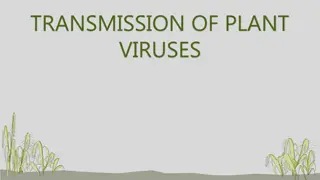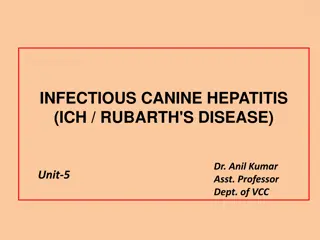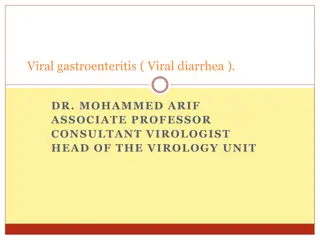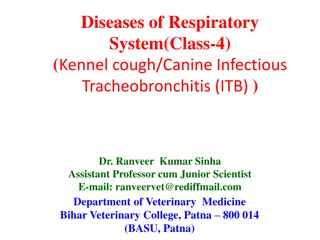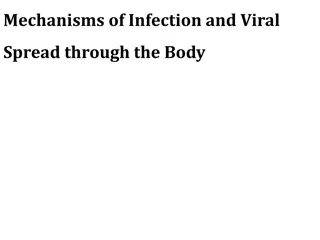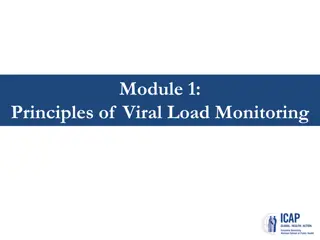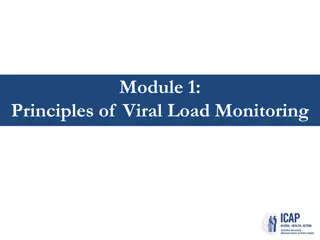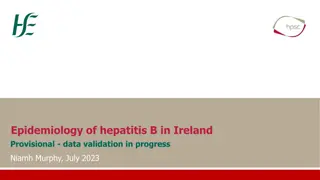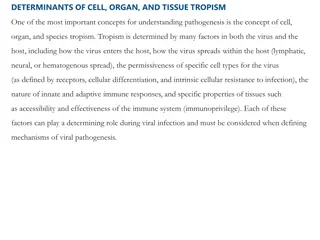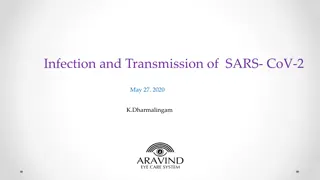Understanding Canine Viral Infection: A Comprehensive Overview
Canine Viral Infection, caused by canine parvovirus-2, is a highly contagious disease affecting dogs, especially puppies. The infection spreads through fecal-oral route and can lead to severe clinical signs like vomiting, diarrhea, and dehydration. The virus replicates in lymphoid tissues, affecting the gastrointestinal tract, bone marrow, and myocardium. Early detection and treatment are crucial in managing the disease effectively.
Download Presentation

Please find below an Image/Link to download the presentation.
The content on the website is provided AS IS for your information and personal use only. It may not be sold, licensed, or shared on other websites without obtaining consent from the author. Download presentation by click this link. If you encounter any issues during the download, it is possible that the publisher has removed the file from their server.
E N D
Presentation Transcript
Anil Kumar Asst. Professor Dept. of VCC UNIT-6(For 4th Professional) & VMD-422 (Old batch)
CANINE VIRAL INFECTION Etiology: It is infectious diseases of dogs worldwide, caused by canine parvovirus-2 (CPV-2),a SSDNA virus of Genus-Parvovirus. The virus require rapidly dividing cells for replication It can survive for long periods (over 1 year) in the environment. Host affected: Dogs, especially less than 12 weeks of age. But, can also occur in unvaccinated vaccinated adult dogs. Transmission: Fecal-oral route and virus that persists on fomites. Virus is shed for a few days before the onset of clinical signs non-enveloped or improperly
Risk factors: The severity of clinical signs depends on: Virus strain Host immunity, which is affected by stressors such as weaning and overcrowding, maternal antibody, and the presence of concurrent infections such as other enteric viral and parasitic infections. canine parvovirus, replicate and destroy crypt epithelial cells
Virus Pathogenesis: Starts replication in lymphoid tissues of oropharynx, mesenteric lymph nodes, bone marrow and thymus and viremia developed GI tract Bone Marrow Epithelium of the tongue, oral cavity, esophagus, and intestinal tract, and especially the germinal epithelial cells of the intestinal crypts Lymphopenia and also due to sequestration of neutrophils gastrointestinal tissue. &Neutropenia in damaged Important points to Know Dogs with canine parvoviral enteritis have evidence of disordered coagulation Infection of the dam by CPV-2 variants early in gestation can lead to infertility, resorption, or abortion Puppies that are Infected in utero or up to 2 weeks of age may myocarditis Malabsorption intestinal permeability and increased Secondary bacterial infection Results in clinical signs of fever, lethargy, inappetence, vomiting, diarrhea, rapid dehydration, and abdominal pain. Diarrhea is often liquid, foul-smelling, and may contain streaks of blood or frank blood develop viral
A B Fig. : A-Normal intestinal villus showing cellular differentiation along the villus B-Parvovirus-infected villus showing collapse and necrosis of intestinal villus.
Physical Examination Findings CPV infection has been associated with three main tissues GI tract, bone marrow, and myocardium but the skin and nervous tissue can also be affected. GI tract and Bone marrow involvement: Vomiting is often severe and is followed by diarrhea, anorexia, and rapid onset of dehydration. The feces appear yellow-gray and are streaked or darkened by blood Elevated rectal temperature (40 to 41 C [104 to 105 F]) and leukopenia (mainly lymphopenia) may be present, especially in severe cases. Death within 2 days after the onset of illness due to gram-negative sepsis or disseminated intravascular coagulation, or both.
Canine Parvovirus-2 Myocarditis CPV myocarditis can develop from infection in utero or in pups younger than 6 weeks of age. They often die after a short episode of dyspnea, crying, and retching. The spectrum of myocardial disease in individuals is wide and can include any of the following: Acute diarrhea and death, without cardiac signs; Diarrhoea and apparent recovery followed by death, which occurs weeks or months later as a result of congestive heart failure; or Sudden onset of congestive heart failure, which occurs in apparently normal pups at 6 weeks to 6 months of age. Cutaneous Disease: Skin lesions included ulceration of the footpads, pressure points, and mouth and vaginal mucosa. Vesicles in the oral cavity and erythematous patches on the abdomen and perivulvar skin were also present.
Diagnosis: Clinical signs and symptoms i.e th e sudden onset of foul- smelling, bloody diarrhea in a young dog (under 2 years of age) is oft en considered indicative of CPV infection Laboratory tests CBC (leukopenia, neutropenia, and lymphopenia) Abnormal coagulation test Cardiac troponin I is a plasma marker for myocardial damage. Biochemical tests (often hypoalbuminemia, and hypoglycaemia) Detection of Organism Fecal ELISA antigen tests(specific but less sensitive) PCR methods. Antibody Detection Serology is not the best method to diagnose CPV infection, because most dogs are vaccinated against it or have been previously exposed to the virus. shows hypoproteinemia,
Therapy: The primary goals are to Restoration of fluid and electrolyte balance Preventing secondary bacterial infections Fluid therapy should be continued for as long as vomiting or diarrhea (or both) persists Hypoglycemia and hypokalemia are common and should be corrected through additions to the IV fluids. A combination of a penicillin and an aminoglycoside (use cautiously) for best antibacterial spectrum. Parenteral third-generation penicillins or cephalosporins can be used as sole treatment alternatives to achieve the desired spectrum Antiemetics (Metoclopramide prochlorperazine) have proved helpful in most dogs with persistent vomiting. Ondansetron and dolasetron(serotonin antagonists) are also effacious. After recovery from viral enteritis, intestinal parasites should be treated with a broad-spectrum anthelmintic such as fenbendazole. hydrochloride and receptor
Prevention: Vaccination: Both attenuated live and inactivated CPV vaccines are available. Attenuated live vaccines should never be administered to pregnant bitches because they may cause disease in the developing fetus. Monovalent CPV vaccines administered by the intranasal route and commercially available The age at which a pup should be vaccinated successfully can be predicted through determination of the MDA titers by serologic tests. Pups from a bitch with low protective titer of antibody to CPV can be successfully immunized by 6 weeks of age, but in pups from a bitch with a very high titer to CPV, MDA may persist much longer. Pups of unknown immune status can be vaccinated with a high-titer-attenuated live CPV vaccine at 6, 9, and 12 weeks of age





